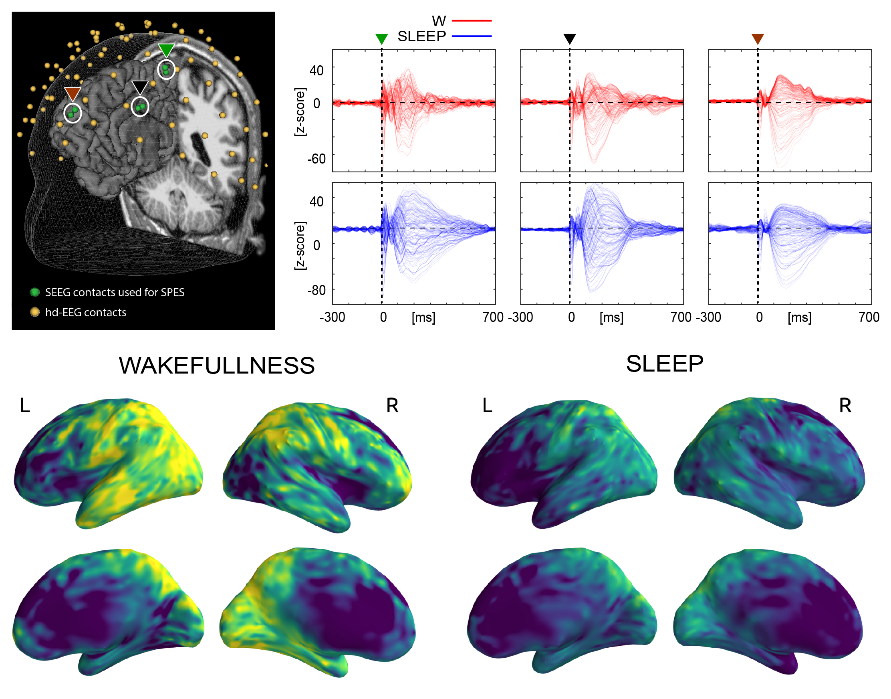Overview:
This project aims at identifying cortical areas that are relevant for consciousness by building an atlas of perturbational complexity.
Abstract:
Mapping the topography of perturbational complexity index (PCI) would allow identifying the cortical nodes with high PCI values and thus verifying whether complexity arises from a few cortical hubs or rather appears distributed over many cortical areas. A fine-grained PCI atlas would also allow testing the hardwiring of consciousness on anatomical factors such as cortical thickness, depth, gradients, or myelination. Finally, atlasing PCI would contribute conclusive evidence to open debates about whether complexity is most prominent in the front or in the back of the brain.
To this aim, we retrospectively apply PCIst (a variation of PCI) on a large dataset of simultaneous intracranial and scalp recordings collected for clinical use. The recordings are derived from intracerebral Single Pulse Electrical Stimulation (SPES) implanted in epileptic patients for presurgical evaluation. This allows SPES of many different brain sites.
Although limited by the clinical needs, SPES could be delivered in principle at any area of the human brain. We have estimated that by collecting data from ~80 subjects (corresponding to ~1200 stimulating sessions) we can cover the entire cortex, thus obtaining a full-fledged Atlas of PCI.
Preliminary results from 37 patients show that the brain response to SPES in sleep is characterized by an overall reduced level of perturbational complexity with respect to wakefulness. Also, the activity of the brain generating the high complexity observed during wakefulness is more prominent in the back of the brain, as assessed by principal component analysis.

Broader Impact:
An atlas of PCI will shed light onto possible anatomo-functional underpinnings determining the capacity for consciousness of specific cortical areas, paving the way for future applications spanning from neurosurgical planning to the non-invasive neuro-modulation of conscious states.